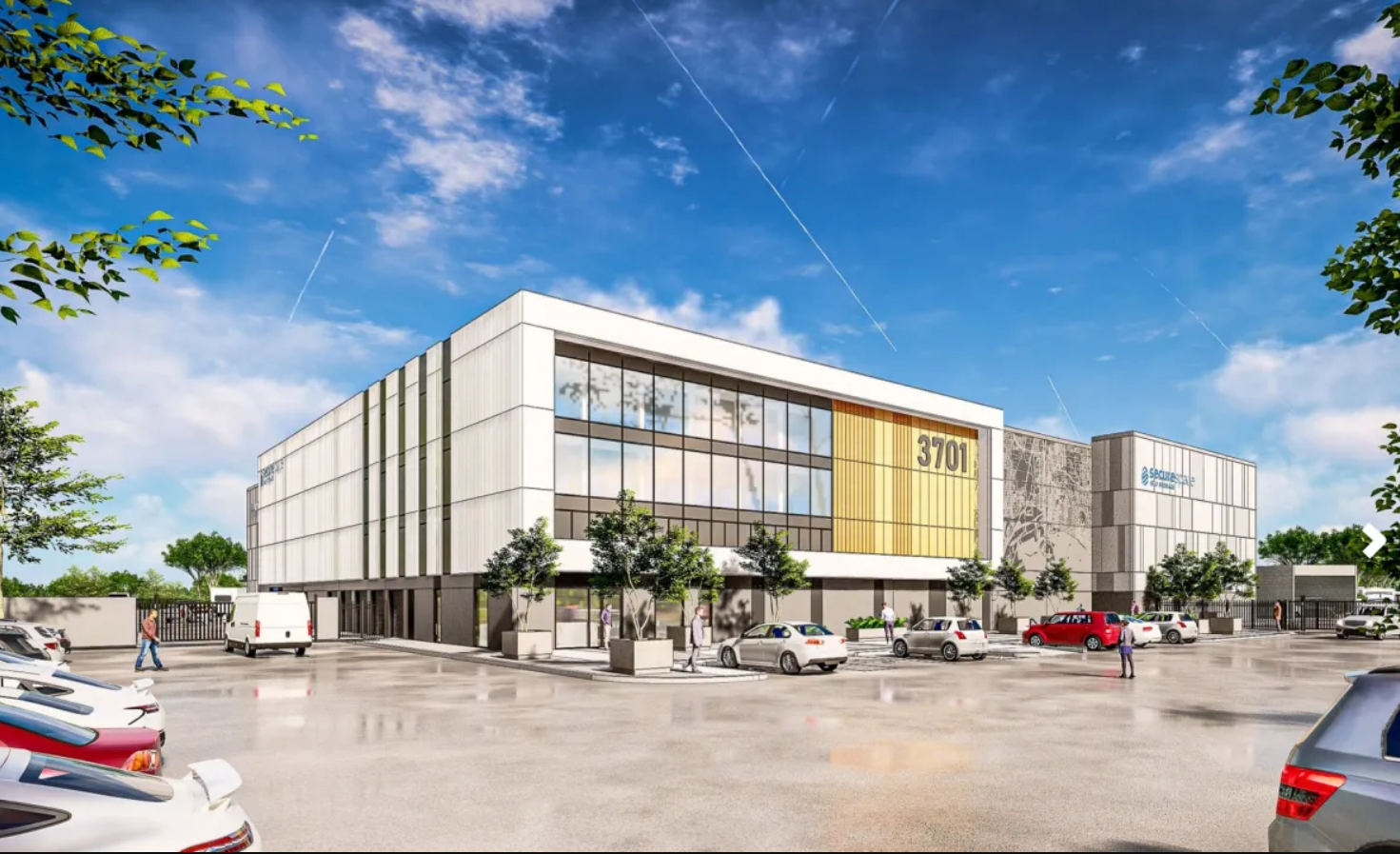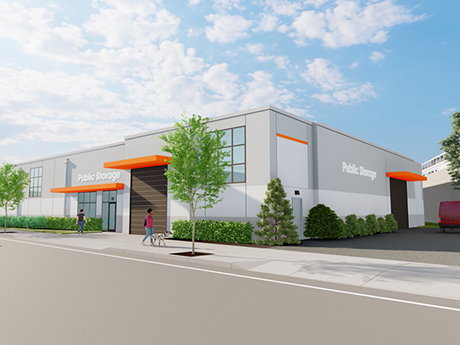
Years of battles between a property owner who sought a self-storage complex and Long Beach residents who wanted a park at the site instead have concluded with the development getting the green light from the city. But first the owners must decontaminate the vacant area along the Los Angeles River.
The construction project, dubbed the Pacific Place Project, will bring a self-storage facility, recreational vehicle storage, and a private car wash to the vacant parcel at 3701 Pacific Place – which will be constructed and operated by InSite Property Group, a self-storage acquisition, development and management company.
An earlier iteration of this project came before the City Council, Planning Commission and also the L.A. Superior Court. Local environmental justice groups filed a lawsuit to require an environmental impact report for the project, and are continuing to advocate for the parcel to become open space.
InSite and city staff worked to bring back a new version of the Pacific Place Project, which once again was approved by the City Council. The panel’s approval includes three conditional use permits, site plan review, general plan map amendment, zone change, zoning code amendment, and denying two appeals.
The project site consists of 13.95 acres of land located at the north end of Pacific Place and Ambeco Road, to the north of the 405 Freeway and east of the Los Angeles River.
The majority of the site has been vacant since 2007 after it ceased to be a private golf driving range for ten years, according to a staff report. The golf-related retail shop and equipment rental continued to operate after the closure of the driving range until it closed in 2015.
From 2015 to 2021, only dilapidated fencing and netting and support beams from an old canopy remained, creating an ideal location for nuisance activity which does take place at the site, such as illegal driving of off-road vehicles, according to the staff report.
Prior to the site’s operation as a golf driving range, it was an oil brine water treatment facility for on-site and off-site oil production activities and oil well drilling, city staff said during the Tuesday, Aug. 12, meeting. The oil brine water treatment facility was established in the 1920s and continued until the 1950s. The site’s oil well drilling activities took place between the 1930s and 1980s, with 13 oil wells being drilled and 11 of which produced oil.
This combination of environmental and physical constraints lends itself well to a storage use, which is preferred only when other more intensive development is not appropriate, according to the staff report.
“The proposed project will convert the site into an economically beneficial, safe and environmentally responsible site that will improve public access,” said Cuentin Jackson, the city’s project planner, “in the form of newly paved roads, new sidewalks and on-site access to the adjacent LA River bike path.”
The Planning Commission, on June 5, OK’d the project and recommended that the City Council also approve it and certify the environmental impact report.
The project was originally submitted in 2020, and in December of that year, the Planning Commission approved that version of the project – which was a three-story self-storage facility, RV parking lot and car wash. That decision was appealed to the City Council, which heard the item in April 2021 and upheld the Planning Commission’s approval.
In 2022, a lawsuit was filed against the city by the environmental justice group Riverpark Coalition and environmental watchdog organization Los Angeles Waterkeeper, citing several reasons for opposition, including an insufficient level of environmental review. In June 2022, the courts ruled in favor of the environmental justice groups, determining that a full environmental impact report (EIR) would be required, which effectively nullified all previous approvals for that version of the project.
InSite resubmitted the project with modifications, and an EIR was prepared by the city, according to the staff report. The EIR determined that the project, in compliance with all recommended mitigation measures, would not result in any significant adverse environmental impacts.
There were two appeals for the project, once again, from the Riverpark Coalition and Los Angeles Waterkeeper.
Both groups had concerns regarding adequate analysis of a variety of topical areas, such as air quality, biological resources, hazards and hazardous substances, deferral of analysis and mitigation to the California Department of Toxic Substances Control, conflicts with planning documents that envision developing the site as park space and improperly relied upon studies.
“Unfortunately, the EIR prepared for the project continues to be insufficient. We’ve submitted several letters detailing the EIR’s many flaws, supported by expert analyses,” said Sunjana Supekar, the attorney representing the Riverpark Coalition. “We’ve identified conflicts with numerous land use plans adopted for the purpose of avoiding or mitigating significant environmental impacts.”
City staff said that the EIR determined that the project would not result in any significant adverse environmental impacts and that the California Department of Toxic Substances Control conducted its preliminary review and approved the remediation approach. A further final sign-off will be required at the time of construction, according to the staff report.
The environmental justice groups also brought up the concern of park equity in the area. They described the site as being accessible for residents on the west side of Long Beach who could benefit from open space at that parcel.
“The appellants contend that the city should deny the proposed development of this private property so that it can instead be developed as park space,” said Alison Spindler-Ruiz, planning bureau manager for the Community Development Department. “However, doing so could be considered a regulatory takings by denying the private property owner their rights to develop and in fact, it’s our understanding that multiple attempts have been made in the past to acquire the site to be developed as park space.”
Spindler-Ruiz added that turning the parcel into a park would require millions of dollars – resources that the city does not have – and would take a lot more effort to make sure the soil was safe for public use. The project site is across the street from Los Cerritos Park, so it would not be a top priority for the city to invest in turning that space into a park.
During the council meeting last week, more than 20 people gave public comments both for and against the project; the majority were in opposition and asked the city to consider making the parcel a park instead. Those in favor were carpenter labor union members and residents who live near the area, who see it as a blighted site and saw the project as a positive development for the area.
“We certainly know that there is a need for open space all over the west side and North Long Beach where we live,” Mayor Rex Richardson said. “It’s incredibly important, as the attorney named, this is a specific hearing about the merits of the EIR, and so the decision made now has to be solely based on what is presented in front of us. It does not mean that you cannot engage in additional discussions, separately from this, about ways to continue to focus on open space expansion.”
The Long Beach City Council voted 8-1 to approve the Pacific Park Project. Councilmember Megan Kerr, whose Fifth District is where the project is located, was the lone opposing vote and said that although she was grateful for everyone’s work involving the project, she was going to represent her constituents who were advocating for open space.
“The project in front of us may meet requirements, but fall short of the vision of many in our community that they hold for open space,” Kerr said. “For this reason, I will be voting no, and I will continue to work with the community in good faith on a path forward to increase open space.”




